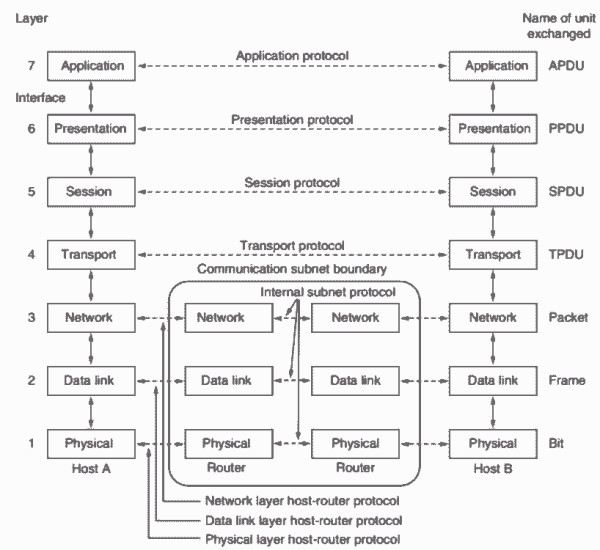The OSI model is based on a proposal developed by the International Standards Organization (ISO) as a first step toward international standardization of the protocols used in the various layers (Day and Zimmermann, 1983). It was revised in 1995 (Day, 1995). The model is called the ISO OSI (Open Systems Interconnection) Reference Model because it deals with connecting open systems—that is, systems that are open for communication with other systems. The OSI model has seven layers

Here's an overview of the seven layers of the OSI reference model, from the bottom (Layer 1) to the top (Layer 7):
-
Physical Layer: This is the lowest layer and deals with the physical aspects of network communication, such as cables, connectors, and electrical voltages. It defines the hardware requirements for transmitting raw binary data over a physical medium.
-
Data Link Layer: The Data Link Layer is responsible for establishing a reliable link between two directly connected nodes. It ensures data integrity, handles error detection and correction, and manages access to the physical medium. Ethernet and Wi-Fi protocols operate at this layer.
-
Network Layer: The Network Layer is responsible for routing data packets from the source to the destination across multiple intermediate devices (routers). It deals with logical addressing (such as IP addresses), packet forwarding, and routing decisions. The Internet Protocol (IP) operates at this layer.
-
Transport Layer: The Transport Layer manages end-to-end communication between devices and ensures data delivery, error checking, and flow control. It can establish connections (in the case of TCP) or provide a connectionless service (in the case of UDP).
-
Session Layer: The Session Layer establishes, maintains, and terminates communication sessions between two devices. It handles functions like session synchronization, checkpointing, and recovery.
-
Presentation Layer: The Presentation Layer is responsible for data translation, encryption, and compression. It ensures that data exchanged between devices is in a format that both can understand, regardless of differences in data representation or encoding.
-
Application Layer: The Application Layer is the topmost layer and is closest to the end-user. It provides network services directly to applications and end-users, including functions like file transfer, email, web browsing, and remote access. Many different application protocols, such as HTTP (for web browsing) and SMTP (for email), operate at this layer.